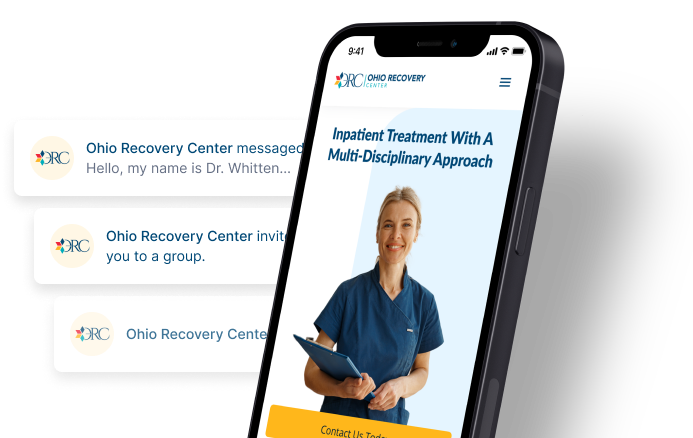What Is Palmitoylethanolamide (PEA)?

Written by: Fikret Terzic MD, MS
Many Ohio residents have started taking a dietary supplement called palmitoylethanolamide (PEA). The FDA has not approved this substance for any medical uses. However, studies suggest it could help treat a variety of conditions, including osteoarthritis, fibromyalgia, and diabetic neuropathy.

In the last few years, many Ohioans have started taking palmitoylethanolamide (PEA). This dietary supplement acts as an analgesic (painkiller) and anti-inflammatory agent.
It has not been approved by the United States Food and Drug Administration (FDA) for any medical uses. However, studies suggest that it might help treat a variety of health issues.
What Is Palmitoylethanolamide (PEA)?
Palmitoylethanolamide (PEA) is a lipid (fatty compound) that occurs naturally in the human body. It’s also found in various foods, including egg yolks, peanuts, and olive oil.
PEA acts similarly to endocannabinoids. Endocannabinoids are naturally occurring compounds that resemble cannabinoids (compounds from the cannabis plant).
However, unlike cannabis, PEA doesn’t have psychoactive effects, meaning it won’t get you high. This is because it doesn’t act on the classic cannabinoid receptors CB1 and CB2.
Like a cannabinoid called cannabidiol (CBD), PEA has pain-relieving and anti-inflammatory effects. It provides pain relief by reducing levels of an enzyme called fatty acid amide hydrolase (FAAH). FAAH is responsible for breaking down cannabinoids. By reducing it, PEA indirectly increases levels of a natural cannabinoid called anandamide, which eases pain.
PEA fights inflammation by activating peroxisome proliferator-activated receptors (PPARs). These anti-inflammatory proteins halt the production of numerous inflammatory substances.
PEA Uses
As mentioned above, the FDA has not approved PEA for any medical uses. However, research suggests that the substance may improve function and decrease chronic pain in people with osteoarthritis. It may also help treat other conditions, including:
- fibromyalgia
- carpal tunnel syndrome
- multiple sclerosis
- Alzheimer’s disease
- Parkinson’s disease
- sciatic pain
- neuropathic pain from stroke or multiple sclerosis
- diabetic neuropathy and chemotherapy-induced peripheral neuropathy
- failed back surgery syndrome
- chronic regional pain syndrome
- chronic pelvic and vaginal pain
- low back pain
- postherpetic neuralgia
- eye nerve damage
- migraines
- anxiety
- depression
- trouble sleeping
- the common cold
More research is needed to determine the effectiveness of PEA in treating these issues.
PEA does not seem to treat all forms of pain. For example, studies show that the substance does not decrease pain caused by spinal cord injury.
Other Potential Uses
Animal and cell studies suggest that PEA may help treat the following conditions:
- high blood pressure
- heart tissue injury
- inflammatory bowel disease (IBS)
- eczema and other skin allergies
- ulcerative colitis
However, researchers have not yet determined whether PEA can treat these conditions in humans.
Is PEA Safe?
When used for up to 3 months, PEA supplements don’t seem to have any serious side effects. However, some people may experience nausea, stomach upset, and diarrhea. There have not been enough clinical trials to determine whether PEA is safe to use for more than 3 months.
Along with causing little to no side effects, PEA doesn’t seem to have any negative interactions with other drugs.
Still, you should talk to your healthcare provider before using it. They can help you determine the amount of PEA you should use. This amount can vary widely depending on the health conditions you want to treat.
For example, many people need at least 600 milligrams of PEA a day to treat nerve pain, 1.8 grams a day to reduce eye nerve damage, and 1.2 grams a day to treat diabetic nerve pain or the common cold. Your doctor may also recommend that you split your dose into two doses to be taken at different times of the day.
Is PEA Addictive?
PEA doesn’t seem to cause tolerance, physical dependence, or other classic symptoms of addiction.
However, using any substance on a regular basis can sometimes lead to psychological dependence. That means you might start feeling like you can’t function without PEA. As a result, you may start using PEA in a manner that could harm your health.
For instance, you might take higher doses or take it for a longer period of time than your healthcare provider recommends.
If you feel unable to follow your doctor’s recommendations for using PEA, consider seeking help at a substance abuse treatment program. These programs offer therapy, support groups, and other services to help you control your substance use.
To learn more about substance abuse treatment options, please reach out to Ohio Recovery Center. Our inpatient treatment programs provide personalized, evidence-based care to help you or your loved one stay healthy.
- British Journal of Clinical Pharmacology — Palmitoylethanolamide for the treatment of pain: pharmacokinetics, safety and efficacy https://www.ncbi.nlm.nih.gov/pmc/articles/PMC5094513/
- British Journal of Pharmacology — The pharmacology of palmitoylethanolamide and first data on the therapeutic efficacy of some of its new formulations https://www.ncbi.nlm.nih.gov/pmc/articles/PMC5429331/
- International Journal of Molecular Sciences — Palmitoylethanolamide: A Natural Compound for Health Management https://www.ncbi.nlm.nih.gov/pmc/articles/PMC8157570/
- Journal of Pain Research — Therapeutic utility of palmitoylethanolamide in the treatment of neuropathic pain associated with various pathological conditions: a case series https://www.ncbi.nlm.nih.gov/pmc/articles/PMC3500919/
- PLos One — Palmitoylethanolamide treatment reduces blood pressure in spontaneously hypertensive rats: involvement of cytochrome p450-derived eicosanoids and renin angiotensin system https://pubmed.ncbi.nlm.nih.gov/25951330/

